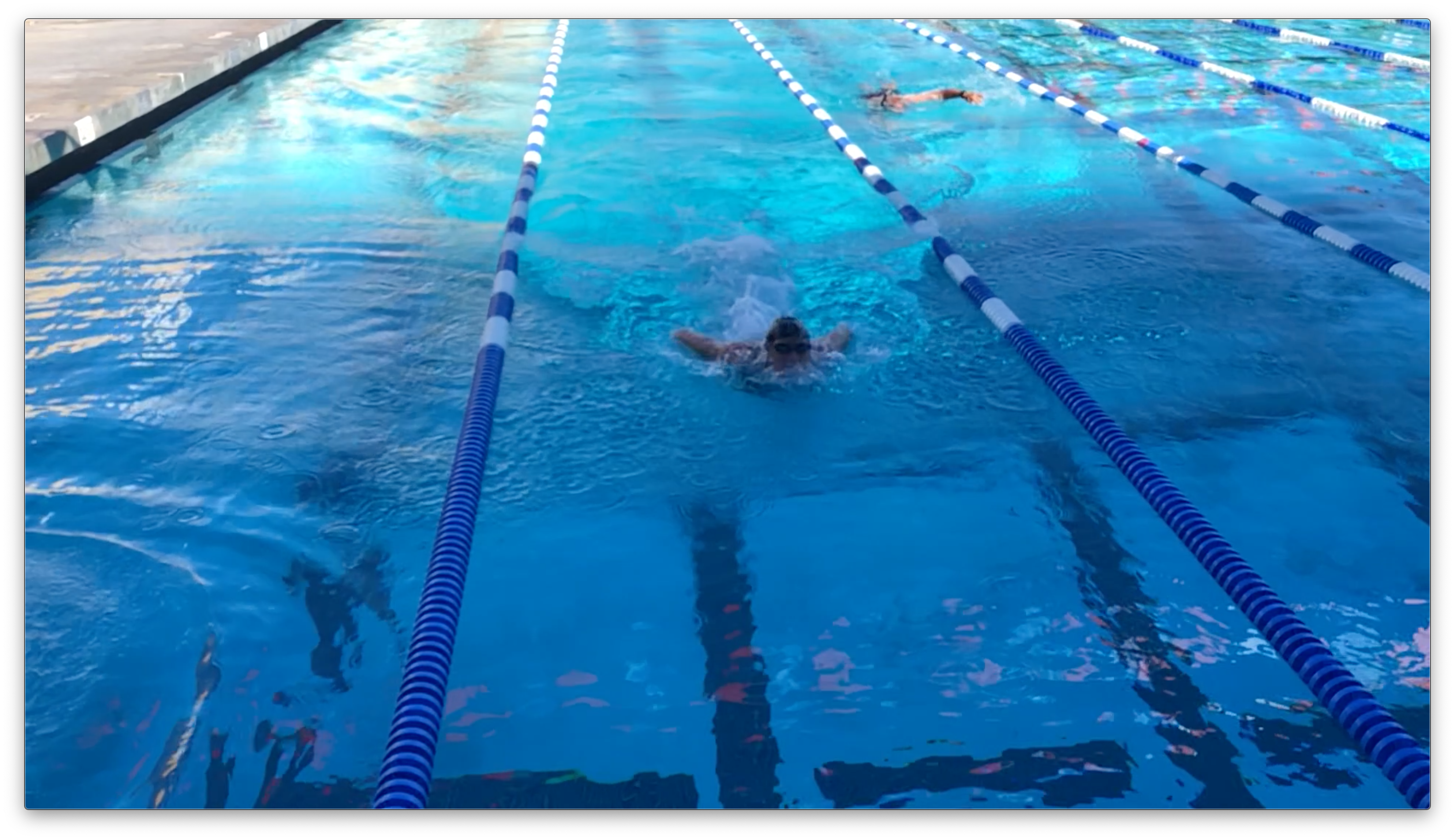Recently, I wrote an article on the benefits of a more vertical arm recovery in butterfly, pointing to the techniques used by Rikako Ikee of Japan and Laszlo Cseh of Hungary, as elite examples. Another example of an elite swimmer using this higher arm recovery in butterfly is Olympic gold medalist Mireia Belmonte Garcia of Spain. I can assure you that all of these swimmers share the common trait of having highly flexible shoulders; being able to extend the shoulders backwards easily and far.
As coaches, we sometimes find young swimmers that demonstrate this extraordinary and remarkable shoulder flexibility that would enable them to use this butterfly technique. The question is should we be teaching the high vertical arm recovery in fly to them? I think we should.
There are two primary questions that we should ask ourselves. Is this technique faster than using a more horizontal arm recovery? Is there more risk of shoulder injury using this technique?
With respect to being faster, I believe that it is. Using gravitational forces, a more vertical approach of the arms to the water will result in more kinetic energy as the hands and arms strike the water. This event should occur precisely at the same time as the second down kick. The greater the kinetic energy in this hand/arm motion, the more propulsion is generated by that down kick. We have tested the butterfly recovery motion both ways using velocity meter technology and have found a higher peak acceleration rate and a greater increase in velocity at this moment from using the higher arm recovery. Laszlo Cseh, one of the fastest butterflyers in the world, doesn’t even use a first down kick, yet generates such a surge in speed from his strong second down kick, coupled with his vertical arm recovery, that he swims really fast.
Does the higher arm recovery in butterfly increase the risk of shoulder injuries? I doubt it. According to Dr. J. Pieter Hommen, an Orthopedic specialist in Miami, Florida, specializing in sports knee and shoulder injuries, most of the shoulder injuries in swimming are categorized as either tendonitis or impingement issues. Both injuries are related to overuse. The tendonitis problems seem to be more related to the pulling motion underwater, where most of the torque on the shoulder joint is applied. Impingement issues seem to be more related to recovery motion or improper placement of the arm in the water after the recovery, but before the pulling motion begins. In his opinion, most of the impingement shoulder problems occur in tight shoulders, not in hypermobile shoulders such as we find in the swimmers doing high arm recovery.
I honestly don’t know of enough swimmers using this vertical technique to be absolutely certain, but at this point, I don’t believe that this recovery motion will put them at more risk of injury. The only downside to using this technique is that it requires more work to do. Like any other technique, the more a swimmer practices it, the better they get at doing it.
I recently had a young swimmer at The Race Club that was able to use the vertical recovery technique really well. Upon returning home, her coach insisted that she not use it, preferring the more conventional horizontal recovery. He insisted that she was not old enough to use that technique.
I would have preferred that the coach would have called me to discuss the matter, but that didn’t happen. If you are a coach and have a swimmer come to one of our camps at The Race Club and return home using some technique that you don’t agree with, are not familiar with, or perhaps don’t understand, please call me. You may be right and I may be wrong, but it is always best to discuss the matter coach to coach. This is not a one-size-fits all sport, yet we try to base all of our teaching at The Race Club on science-based evidence, not just opinion.
This week, in Lanes 2-4 of our Race Club subscription, you will find a webisode highlighting one of these extraordinary Race Club athletes using high arm recovery in butterfly. In this webisode, we also compare her to her sister that does not have such great flexibility in her shoulders using a more conventional arm recovery.
Hope you enjoy!
Yours in swimming,
Gary Sr.
https://theraceclub.com/sc-videos/butterfly-high-arm-recovery/


https://vimeo.com/276969555